
2018/19 Integrated University Plan 1 | Page
Approved by the Board of Governors Motion: 2018BP03.23.04
2018-2019 Integrated
University Plan

2018/19 Integrated University Plan 2 | Page
Approved by the Board of Governors Motion: 2018BP03.23.04
Contents
Building a Sustainable Future ....................................................................................................... 5
Environmental Scan ...................................................................................................................... 5
Destination University: Strategic Enrolment Planning ................................................................. 7
2. Integrated Planning Overview ............................................................................................................ 10
Academic Planning ...................................................................................................................... 10
Research ...................................................................................................................................... 12
Indigenization .............................................................................................................................. 14
Regional - Serving the People of Northern British Columbia ...................................................... 16
Internationalization: Enhancing the University’s Global Presence ............................................ 18
and Prominence ...................................................................................................................................... 18
3. Integrated University Planning Framework ........................................................................................ 20
4. 2018/2019 Financial Planning Overview............................................................................................. 27
Comprehensive Financial Operations ......................................................................................... 27
5. Resource Allocation Recommendation and Fund Information .......................................................... 31
Consolidated General Operating Budget .................................................................................... 32
Planning Assumptions ......................................................................................................... 32
Unadjusted Three-Year Budget Projections ........................................................................ 33
Operating and Revenue Adjustment Plan ........................................................................... 34
2018/2019 Proposed Budget and Two-Year Projections .................................................... 35
Revenue projections (as per Table 4) ................................................................................. 35
Expenditure Projections (details of Table 4) ....................................................................... 38
Ancillary Operations Budgets ...................................................................................................... 40
Business Services and Continuing Studies: Overview ......................................................... 41
Business Services Contribution Summary ........................................................................... 42
Business Services Central .................................................................................................... 43
Residence ............................................................................................................................ 43
Food Services ...................................................................................................................... 44
Continuing Studies .............................................................................................................. 44
Conference and Event Services ........................................................................................... 45

2018/19 Integrated University Plan 3 | Page
Approved by the Board of Governors Motion: 2018BP03.23.04
Retail Services ..................................................................................................................... 46
Northern Sport Centre ........................................................................................................ 47
International Education Budgets ........................................................................................ 48
Parking and Security Services.............................................................................................. 48
Sponsored Research .................................................................................................................... 51
External Grant Funding ....................................................................................................... 52
Institutional Partnership Funding ....................................................................................... 52
Research and Advancement Linkages ................................................................................. 52
Research Chairs and Institutes ............................................................................................ 53
Wood Innovation Research Lab (WIRL) .............................................................................. 53
Continued Areas of Focus ................................................................................................... 53
Research Summary ............................................................................................................. 54
Specific Purpose and Endowment Funds .................................................................................... 56
Conclusion ................................................................................................................................... 57
Appendix 1: 2018/2019 Action Planning Template ............................................................................... 58
Appendix 2: 2018/2019 Goals ................................................................................................................ 63

2018/19 Integrated University Plan 4 | Page
Approved by the Board of Governors Motion: 2018BP03.23.04
2018-2019 Planning Context

2018/19 Integrated University Plan 5 | Page
Approved by the Board of Governors Motion: 2018BP03.23.04
1. 2018/19 Planning Context
Building a Sustainable Future
In 2016, the University of Northern British Columbia launched the Integrated Planning Framework to link
academic and research aspirations to the financial reality of the University. The Integrated Planning
Framework has proven to be successful in supporting the academic and research priorities as it moves the
University closer to financial equilibrium. The course UNBC adopted when introducing the Integrated
Planning Framework met with success but the priorities for the Academic and Research Action Plans had
not been finalized. In 2017, the strategic priorities from these action plans were integrated into the
University’s Strategic Road Map. Now that the outcomes for strategic priorities have been identified in
the Road Map, UNBC must take bold action to truly set the University on the best course for the future.
Success will come from achieving the desired outcomes within a sound financial plan for the following
University strategic priorities:
• attract, retain, and develop outstanding students, faculty and staff;
• enhance the quality and impact of academic programming and delivery;
• enhance the research culture;
• ensure financial accountability, sustainability and operational effectiveness.
In 2018/19, each unit within the Integrated Planning Framework was asked to identify opportunities for
investment in support of the strategic priorities and efficiencies to reduce expenditure. Through this
effort, reallocations and investments to support key desired outcomes of the Strategic Road Map were
made possible. The 2018/19 Action Planning exercise also identified budget reductions by replacing short
term solutions with progress towards a sustainable financial model for the future.
The Integrated Planning process provides UNBC with a new way of doing business, re-thinking how the
University delivers service to students and collaborating more among units. UNBC can take bold action,
achieve the collective goals and truly renew the University.
Environmental Scan
After four straight years of declining international and domestic enrolment and tuition fee revenue, the
University experienced enrollment growth in 2016 and 2017. Domestic and international marketing and
recruiting, including more effective use of social media contributed to these outcomes. Additional
investments in the 2018/19 budget are expected to enable this positive trend to continue, as noted below,
along with addressing some cost pressures on the University.

2018/19 Integrated University Plan 6 | Page
Approved by the Board of Governors Motion: 2018BP03.23.04
Figure 1: Full-Time Equivalent (FTE) by Fiscal Year
• In 2017, the Ministry of Advanced Education, Skills and Training announced the long-
anticipated growth in the number of Science, Technology, Engineering and Math (STEM) seats
at British Columbia universities. UNBC will receive funding over the next three years for 280
FTEs (Full-Time Equivalent students) in Environmental and Civil Engineering.
• The 2017 wildfire season was one of the worst on record in British Columbia, significantly
impacting new and returning students and their families from across the province.
• The timely completion of the Wood Innovation Research Lab in April 2018, funded by a joint
federal-provincial investment through the Strategic Infrastructure Fund program, will create
opportunities for UNBC students and researchers to discover new, sustainable ways of
integrating wood into building design and construction.
• The recently announced increase in federal research funding, including the Tri-Agency
Granting Councils, will provide opportunities to boost research enterprise at UNBC.
• The possibility of additional Strategic Innovation Fund grants to post-secondary institutions
across Canada may also provide an opportunity to support research and capital projects
currently in the planning and design phase.
• The University continues to purchase essential goods such as software, library acquisitions,
and research equipment in U.S. dollars. This is creating pressure from the fluctuating
Canadian dollar exchange rate.
• The February 2018 budget presentation by the provincial government calls for a new payroll
tax to replace the medical service plan premiums. This may have an adverse financial impact
on post-secondary institutions beginning 2019.
• Domestic tuition and fee increases are mandated by the provincial government to be no more
than 2.0% annually.
0.0
500.0
1000.0
1500.0
2000.0
2500.0
3000.0
3500.0
1996/97 1999/00 2002/03
2005/06 2008/09
2011/12 2014/15
2017/18
Grand Total
Domestic UG
Int'l UG Graduate

2018/19 Integrated University Plan 7 | Page
Approved by the Board of Governors Motion: 2018BP03.23.04
• The base provincial operating grant will only increase for incremental employee
compensation costs approved under the Economic Stability Mandate.
Destination University: Strategic Enrolment Planning
UNBC experienced an increase over the previous year of 1.2% for the incoming new student class and
2.4% for domestic student population. Several factors contribute to this growth.
• A full complement of Student Recruitment and Enrolment Service Officers completed one of
the most extensive recruitment travel schedules.
• A new Client Relationship Management (CRM) system enabled the University to communicate
with prospective students in a more focused, highly personalized approach.
• UNBC’s continued high ranking in Maclean’s magazine.
• In response to the 2017 wildfire emergency the University created a special bursary that
enabled new and returning students, impacted financially by the wildfires, to continue their
studies.
• The new UNBC4U student portal website, allowed prospective students to define their
specific areas of interest and receive information tailored to their individual needs.
Building on these strategies, these recruitment initiatives are planned for 2018/19.
• Strategies will be implemented for attracting new students, in markets such as Alberta,
Ontario and Northern California where efforts already show promise.
• Recruitment travel within the UNBC region and beyond will increase. The recruitment team
has completed 16 weeks of combined travel to BC high schools and community education
fairs, and will continue these efforts within the province and other markets.
• Evening information sessions will be offered on-campus, online via livestream, and recorded
for prospective students. By incorporating information on scholarships, awards and course
registration, students are better equipped to complete these important steps in their
transition to UNBC.
• An “Admit Survey” was administered for new students who attended the University, and
those admitted but did not attend. This survey provided insight into their decision-making
and challenges experienced in the process. 451 new UNBC students and 113 students who
did not attend participated in the most recent survey. The outcomes of this survey will
continue to inform process improvements.
• A fully-developed e-mail “nurture campaign” will be distributed to prospective students,
providing them with key information throughout the spring and summer and encouraging
them to choose UNBC. Once they have registered they are introduced to UNBC life earlier
than ever before.
• The UNBC Alumni Ambassadors program, piloted by Recruitment and Alumni Relations, will
continue. This program integrates UNBC alumni into the recruitment process, encouraging
them to send personalized letters to prospective students about their experiences at UNBC.

2018/19 Integrated University Plan 8 | Page
Approved by the Board of Governors Motion: 2018BP03.23.04
• More focus will be given to students transferring from in-province and out-of-province
institutions in response to encouraging signs of growth in this area.
• The second year of a three-year program to raise awareness of UNBC among prospective
students in Ontario will proceed. The numbers of high school and transfer students from
Ontario for Fall 2018 has increased.
• The University’s digital presence, to support recruitment through brand awareness, will
continue to increase the number of social media followers.

2018/19 Integrated University Plan 9 | Page
Approved by the Board of Governors Motion: 2018BP03.23.04
Integrated Planning Overview
Academic Planning

2018/19 Integrated University Plan 10 | Page
Approved by the Board of Governors Motion: 2018BP03.23.04
2. Integrated Planning Overview
Academic Planning
Under the leadership of the Provost and Vice-President Academic, academic planning in 2018/19 will build
on the theme of transition and new beginnings. At the heart of this initiative is the Provost’s Advisory
Committee on the Academic Action Plan. The University has an opportunity to examine the structure and
programming that has supported its success for the past 25 years, and make changes that will allow it to
flourish in the short-term, and set the course for future growth and success. The members of this
Committee will play a pivotal role in advising on long-term strategies which will help shape the University’s
academy of the future.
In the Academic Action Plan – Final Recommendations document, there is a clear and strong call for the
University to provide an organizational structure that:
“supports creativity, flexibility, and the interdisciplinary dialogue and
collaboration that will allow UNBC to respond to opportunities that fit our
unique skills and assets.”
The work required to act on this recommendation is significant. It will involve considerable effort,
collaboration, and collegiality of faculty, staff, students, and others. In-depth conversations about
academic programs and strong input from faculty are essential throughout this process. It is important
that the University remain flexible and seize opportunities to create an enhanced learning and research
environment. The University must also develop a budget and information management system to support
and enhance this work.

2018/19 Integrated University Plan 11 | Page
Approved by the Board of Governors Motion: 2018BP03.23.04
Integrated Planning Overview
Research

2018/19 Integrated University Plan 12 | Page
Approved by the Board of Governors Motion: 2018BP03.23.04
Research
As an integral part of UNBC, research:
• attracts and retains the best faculty and students
• teaches students creativity, perseverance and leadership
• engages and encourages faculty at to become leaders in their field
• fulfills our mission and contributes to our region, province, nation and beyond
The University provides outstanding opportunities for undergraduate and graduate students to engage in
meaningful, significant research initiatives. Experiential learning opportunities enable students to develop
the leadership capacity required to succeed in an ever-changing world. Listed below are some examples
of research projects just in this past year.
• Graduate student Heather Mitchell, with a Pacific Institute for Climate Solutions (PICS)
Graduate Fellowship, is examining climate change action in northern communities and
investigating how active transportation such as cycling can play a bigger role in reducing
climate emissions.
• Health Sciences undergraduate Kevin Adam and Interdisciplinary Studies graduate student
Georgia Betkus collaborated with Assistant Professor of Nursing Dr. Shannon Freeman on a
book chapter tracing the history of telehealth.
The following are some examples of faculty engagement in research.
• Dr. Dezene Huber, Dr. Mark Shrimpton and Dr. Brent Murray from UNBC’s Ecosystem Science
and Management department were awarded $164,000 from the Canada Foundation for
Innovation’s John R. Evans Leaders Fund (JELF) to purchase more equipment for conducting
aquaculture studies.
• Dr. Margot Parkes and a team of researchers and partners from across Canada have secured
a five-year research grant focused on working together across sectors to prevent adverse
impacts from resource development, with specific emphasis on rural, remote and Indigenous
communities. The study will receive $2 million from the Canadian Institutes of Health
Research (CIHR).
• Dr. Thomas Tannert, who teaches in the Master of Engineering in Integrated Wood Design
Program, has been named the new Canada Research Chair in Hybrid Wood Structures
Engineering.
• The Research Data Centre opened in the Geoffrey Weller Library provides researchers at the
University, and around the region, a secure connection to Statistics Canada population,
household survey and administrative microdata. Dr. Thomas Callaghan, Dr. Annie Duchesne
and Dr. Shannon Freeman received $10,000 internal awards to undertake research projects
using Statistics Canada data.

2018/19 Integrated University Plan 13 | Page
Approved by the Board of Governors Motion: 2018BP03.23.04
Integrated Planning Overview
Indigenization

2018/19 Integrated University Plan 14 | Page
Approved by the Board of Governors Motion: 2018BP03.23.04
Indigenization
With an aging population of baby boomers set to retire in Canada, Indigenous peoples are the youngest
and fastest growing demographic in the country.
1
In Northern British Columbia 17.4% of the residents
are of First Nations descent, compared to 4.8% for the entire province.
2
The need for skilled workers
creates opportunities, both for education and employment, to help close the gap between Indigenous
and non-Indigenous peoples. Collaborations and partnerships of the University, with Indigenous
communities and other post-secondary institutions to ensure meaningful and culturally respectful
education, are not only necessary, but timely, given steadily growing rates of participation of Indigenous
students in post-secondary education.
Through the University’s most recent engagement process with Indigenous students and communities in
late 2017 and early 2018, students, community members, Elders, and leaders discussed supports required
to eliminate systemic barriers for Indigenous learners. Their message clearly indicates systemic change
means decolonizing and Indigenizing the academy.
This message aligns with recommendations in the UNBC’s Academic Action Plan for decolonization and
Indigenization in all of the University programming, policies, and processes. UNBC remains committed to
supporting Indigenous students, communities, and partners, engaging them, and enlivening interactions
with them. The University is committed to deepening the celebration of Indigenous students. Innovation
in all areas of programing, educational models, relations and conversations with faculty and staff is
needed across the University to continue the commitment towards the Truth and Reconciliation Calls to
Action across service delivery area.
The University is seeking external funding from the federal and provincial governments to build capacity
and a coordinated and collaborative approach to Indigenization across UNBC. If proposals are successful,
UNBC will move forward with hiring a Lead Administrator and key resources to support Indigenization
initiatives.
1
http://www.statcan.gc.ca/daily-quotidien/171025/dq171025a-eng.htm and http://www.statcan.gc.ca/daily-
quotidien/170503/dq170503a-eng.htm
2
See Initiatives Prince George Development Corporation and Northern Development Initiative Trust, 2009
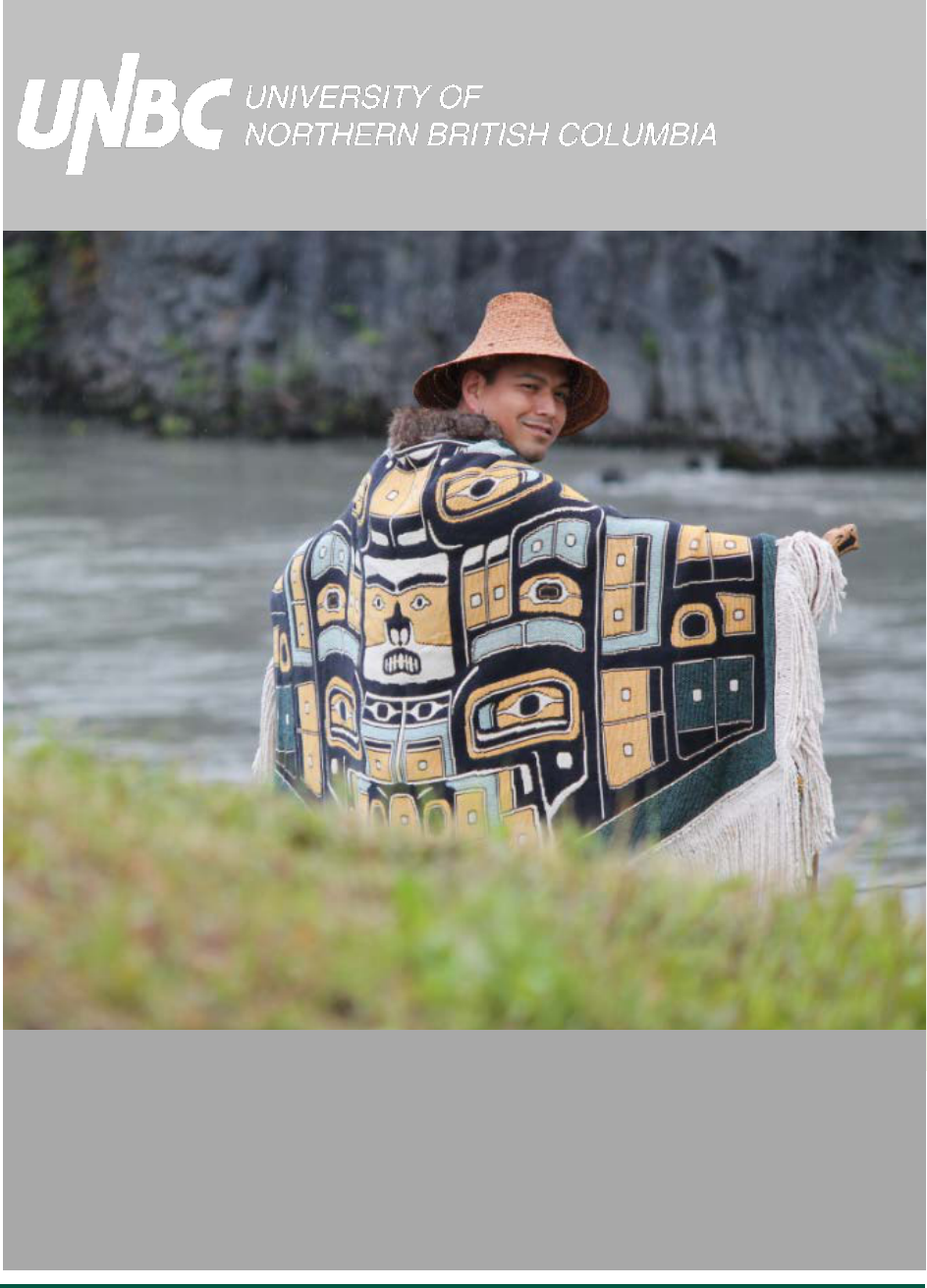
2018/19 Integrated University Plan 15 | Page
Approved by the Board of Governors Motion: 2018BP03.23.04
Integrated Planning Overview
Regional

2018/19 Integrated University Plan 16 | Page
Approved by the Board of Governors Motion: 2018BP03.23.04
Regional - Serving the People of Northern British Columbia
UNBC was founded with a mandate to serve the people of Northern British Columbia through advanced
education and research. Through academic leadership and strengthened coordination, as recommended
in the new Academic Action Plan, the University will explore opportunities to renew its commitment to
program innovation and better integration with Northern British Columbia communities. Here are some
examples of progress in our collaborative initiatives.
• Discussions among northern colleges on jointly offering an Associate of Arts degree by
distance continues.
• Memoranda of Understanding (MOU) on enhanced student transfer have been developed
among Alexander College, Columbia College, College of the Rockies, and Selkirk College. Also
underway are discussions with Nicola Valley Institute of Technology regarding Indigenous
Adult and Higher Learning Association (IAHLA). An MOU on Guaranteed Admission has been
signed with Coquitlam College.
• In June 2017 UNBC recognized the first graduates from the Bachelor of Social Work (BSW)
program at Langara College in Vancouver. which also offers the Master of Business
Administration (MBA) degree program.

2018/19 Integrated University Plan 17 | Page
Approved by the Board of Governors Motion: 2018BP03.23.04
Integrated Planning Overview
Internationalization

2018/19 Integrated University Plan 18 | Page
Approved by the Board of Governors Motion: 2018BP03.23.04
Internationalization: Enhancing the University’s Global Presence
and Prominence
The University has developed, and is committed to, a new, multi-faceted Internationalization strategy
with a focus on high-quality education partners, effective quality control and recruitment of high quality
students.
Four integrated pillars of international engagement will guide our process: student recruitment;
partnerships (articulation, transfer, exchange, and transnational education); contract training;
internationalization on campus. The aim is to create a model for sustainable growth, student-centred
services, opportunities for students, and expansion of intercultural expertise and global citizenship among
faculty.
The University will take the following initiatives.
• Renew the structure of the International Education portfolio to enhance the University’s
approach to Internationalization.
• Integrate structures for decision-making and planning that are closely aligned to the
University’s strategic priorities.
• Review and refine programs marketed to international students and implement an annual
review and assessment process.
• Implement processes to streamline and enhance the International application and admissions
processes.
• Optimize marketing strategies to achieve brand recognition and international prominence.
Through these initiatives international students can add the value of not only increased student
enrolment, but positive impact on our domestic students, making the learning environment at UNBC a
richer one.

2018/19 Integrated University Plan 19 | Page
Approved by the Board of Governors Motion: 2018BP03.23.04
Integrated University
Planning Framework

2018/19 Integrated University Plan 20 | Page
Approved by the Board of Governors Motion: 2018BP03.23.04
3. Integrated University Planning Framework
In 2016/17, we began implementing Integrated University Planning for setting strategic priorities for the
University, while coordinating the use of resources more effectively. When Integrated University Planning
is fully implemented at UNBC, all planning and budget activities throughout the University will be linked,
coordinated and driven by our vision, mission and academic priorities as illustrated in the diagram below.
Figure 2: Integrated Planning
Building on the success of our Integrated University Planning 2017/18, Action Plans (see Appendix 1 Unit
Action Planning Template) from all academic and administrative units now support the four strategic
priorities set out in the UNBC Strategic Road Map. The UNBC Board of Governors and the University
Senate endorsed those Action Plans. They now inform the Strategic Road Map. The 2018/19 Strategic
Road Map below integrates the academic, research and administrative strategic priorities of the
University:
Strategic
Road
Map
Research
Action
Plan
Academic
Action
Plan

2018/19 Integrated University Plan 21 | Page
Approved by the Board of Governors Motion: 2018BP03.23.04
Figure 3: 2018/19 Strategic Road Map
The Strategic Road Map guides the Unit/Program Action Planning process and creates an environment for
collaboration and engagement across the University. It identifies the strategic priorities and desired
outcomes which set the context for the annual planning cycle.
The 2018/19 Call to Action planning approach includes a multi-year plan with a goal to reduce the general
operating budget deficit by $4.0 million through a combination of proposed strategic reallocations,
spending reductions and new investments in the priority areas articulated in the Strategic Road Map.
Members of the Senior Leadership Forum engaged within their units and across the university to develop
Unit Action Plans. While progress has been made, there is still much work to do to involve more of the
University community in an inclusive and meaningful way. The general principles guiding the 2018/19
process included:
• minimize impact on current employees and strategic priorities
• reduced dependency on one-time adjustments to balance the budget
• continued to investment in strategic areas using one-time funding, if available at year end
Through a series of workshops, presentations of the draft Action Plans allowed Senior Leadership Forum
to understand and begin dialogue on areas of risk, opportunities for further collaboration, proposed
reallocations and investment. As an outcome of these discussions, the Senior Leadership Forum provided
input to Senior Administration for consideration in developing the final Integrated University Plan.

2018/19 Integrated University Plan 22 | Page
Approved by the Board of Governors Motion: 2018BP03.23.04
As an outcome of these discussions, the Senior Leadership Forum provided input to Senior Administration
for consideration in developing the final Integrated University Plan. A critical step in this process was to
develop a balanced general operating budget while protecting mission-critical work and enabling modest
new reinvestments.
The final Integrated University Plan incorporates the following strategy elements:
1) Adding Positions to the Base Budget Through Reallocations
To begin building a sustainable workforce for the future and support the mission of the university,
it is important to address short-term funded positions that are critical to advancing the strategic
priorities. In 2018/19, the university will proceed with a reallocation of base operating budget to
support the strategic priorities of Indigenization and graduate programs.
2) Future Reallocations
There are several areas of future risk within the University which have not yet been addressed in
the base operating budget. These areas require adequate base funding to support operations and
successfully deliver mission critical support and services. In 2018/19, one-time funding in the
amount of $2.4 million will continue to be allocated to support these priority areas.
Strategic Priority 1
• Recruitment
• Office of the Registrar
• Student Affairs
• Athletics
• People, Organizational Design and Risk
Strategic Priorities 1 and 2
• Indigenization
• International Education
Strategic Priorities 2 and 4
• Academic Restructuring
Strategic Priority 4
• Communications and Marketing
• Financial Planning
• Governance
• University Advancement

2018/19 Integrated University Plan 23 | Page
Approved by the Board of Governors Motion: 2018BP03.23.04
3) Future One-Time Investments – Projects
Annually, the University considers strategic projects that align and help to advance the
University’s priorities. These projects are supported through one-time funding as it becomes
available:
Strategic Priorities 1 and 4:
• Client Relationship Management Software – Enrolment Management $300,000-$500,000
Strategic Priorities 1 and 3:
• Web Content Management Project – www.unbc.ca
$200,000
The University is maximizing opportunities to support integrated priorities by developing proposals and
securing external funding. Some of the initiatives underway include:
Strategic Priorities 1 and 2:
• Strengthening the UNBC Aboriginal Service Plan (ASP)
• Enhancing UNBC Cooperative Education
• Implementing the new Environmental and Civil Engineering Program
• Developing the proposal for Bachelor of Science in Nursing for the North East
• Indigenous Services Canada – Post-Secondary Partnerships Program
• Enhancing the learning experience for Aboriginal students
Through integrated planning, UNBC made significant strides forward as evidenced by two years of
increased enrolment, reduced reliance on one-time funds, and a budget that is beginning to be driven by
integrated priorities.
The expectations of the University are evolving. Meeting these expectations will require changes. While
the University does not have the resources to meet all of these expectations equally well, it is important
to continue to enhance and strengthen the integrated planning process. The integrated planning cycle
for 2019-2020 will begin earlier in the summer of 2018. It will feature a deeper level of engagement at the
unit level, with greater input from academic departments and individual faculty members. A Provost’s
advisory committee on implementing the Academic Action Plan will be an essential feature of this process,
given the special emphasis on designing a new academic structure. A new financial planning and reporting
system will support the planning and reporting process.

2018/19 Integrated University Plan 24 | Page
Approved by the Board of Governors Motion: 2018BP03.23.04
Figure 4: Draft Integrated Planning Cycle
1) April Fiscal Year Begins
→ UNBC Town Hall
2) May Strategic Road Map Review
→ Senior Administration
3) June Adjust Financial Estimates
→ Senior Administration
Call to Action Presentations
→ Senior Leadership Forum
→ Provost’s Committee on the Academic Action Plan
4) July - September Unit Action Planning
5) September UNBC Planning Updates
→ Board of Governors
→ UNBC Town Hall
6) October Present and Submit Unit Action Plans
→ Senior Leadership Forum
Finalize Recommendations
→ Senior Leadership Forum
7) November Consolidate Unit Action Plans
→ Senior Administration
8) December Draft Integrated University Plan
→ Senior Administration
June
3) Call to
Action
July
4) Unit
Action
Planning
August
5) Unit
Action
Planning
September
6)
UNBC
Planning
Update
October
7) Final Unit
Action Plans
November
8)
Consolidate
Unit Action
Plans
December
9) Draft
Integrated
University
Plan
January
10) Draft
Integrated
University
Plan
February
11) Draft
Integrated
University
Plan
March
12) Final
Integrated
University
Plan
April
1) Fiscal Year
Begins
May
2) Strategic
Road Map
Draft
Integrated University
Planning Cycle

2018/19 Integrated University Plan 25 | Page
Approved by the Board of Governors Motion: 2018BP03.23.04
9) January - February Present Draft Integrated University Plan
→ Senior Administration
→ Senior Leadership Forum
→ Provost’s Committee on the Academic Action Plan
→ Senate Committee on the University Budget
→ Senate
→ UNBC Town Hall
10) March Present Final Integrated University Plan -> Senior Administration
→
Board of Governors for Approval

2018/19 Integrated University Plan 26 | Page
Approved by the Board of Governors Motion: 2018BP03.23.04
2018-2019 Financial
Planning Framework

2018/19 Integrated University Plan 27 | Page
Approved by the Board of Governors Motion: 2018BP03.23.04
4. 2018/2019 Financial Planning Overview
This section of the report represents the proposed 2018/19 Financial Planning Framework for the
University. It is presented to the Board of Governors for consideration and approval.
Several important factors influenced the preparation of the 2018/19 combined general operating and
ancillary services budget process.
• A consolidated year-end deficit:
o $3.5 million in 2015/16
o $1.7 million in 2016/17
o Ministry approval to incur a deficit for 2017/18, with the requirement to achieve an
overall balanced position by 2019/20. The estimated deficit for 2017/18 is
approximately $2.0 million.
• UNBC has balanced the general operating budget with short-term measures for a number of
years.
• The 2017/18 planning approach included “moderate revenue targets, moderate cost
reductions, and investments in critical positions.” The reductions and investments in critical
positions were achieved through one-time funding.
• In the event that sufficient enrolment growth was not achieved, the University identified
areas of potential one-time reduction.
• For fiscal year 2018/19 the planning approach is consistent with last year with additional
emphasis on decreasing reliance on one-time spending reductions.
Comprehensive Financial Operations
UNBC is responsible for the financial stewardship of more than $100 million in total annual revenue. To
enhance accountability, budgetary control and stewardship of resources, UNBC maintains separate funds
for its many diverse activities:
• Consolidated General Operating Fund – includes the general operations of the University,
Routine Capital funding and the Northern Medical Program.
• Ancillary Services Fund – includes the operation of service areas that are considered self-
funding such as: Retail Services, Continuing Studies, Conference and Events, Residence,
Parking and Security, and English Language Studies.
• Specific Purpose & Endowment Funds – includes conferences, special projects, Aboriginal
Service Plan allocations, endowed chairs, student awards and the Northern Medical Programs
Trust.
• Sponsored Research Fund – includes external grants provided specifically for research.
• Capital Fund – includes all minor and major capital projects funded by both internal and
external sources, and the cost of depreciation of capital assets.

2018/19 Integrated University Plan 28 | Page
Approved by the Board of Governors Motion: 2018BP03.23.04
For 2016/17, the total actual revenue for UNBC covering this comprehensive picture was $104.9 million,
distributed across the funds shown in the chart below:
Note: For the purpose of financial statement reporting, revenue that is restricted for specific purposes other than those for the
acquisition or development of depreciable tangible capital assets are recorded as deferred contributions and recognized as
revenue in the year in which the stipulation or restriction on the contributions have been met. Due to application of this accounting
principle, the revenue reported for the fiscal 2017 financial statements was $104.2 million.
In 2016/17 revenue across all funds increased by 1.2% or $1.2 million from the prior year. This was the
net result of an increase of $1.7 million in general operating revenues plus a decrease of $0.5 million in
revenues across all other funds.
The Consolidated General Operating Fund increase was primarily due to targeted funding for mandated
employee salary increases, and grants from other universities. The Sponsored Research revenue increase
was mainly due to six new research projects funded from foundations, federal, provincial and other
sources, totalling about $2.3 million. Research grants across all other projects were relatively flat.
Ancillary and Capital fund revenues remained relatively even compared with the previous year. The
decrease in Specific Purpose and Endowment was primarily due to a $2.7 million decline in investment
income, offset by $0.7 million increase in other sources of revenue.
$76.77
73.2%
$10.71
10.2%
$8.08
7.7%
$8.94
8.5%
$0.41
0.4%
Figure 5 - Total Revenue by Fund (2016/17: $104.9M)
Consolidated
General Operating
Ancillary
Specific Purpose &
Endowment
Sponsored
Research
Capital

2018/19 Integrated University Plan 29 | Page
Approved by the Board of Governors Motion: 2018BP03.23.04
The following chart summarizes revenue by fund over the past five years:
$0
$10
$20
$30
$40
$50
$60
$70
$80
2012/13 2013/14 2014/15 2015/16 2016/17
Figure 6 - Total Revenue by Year (2012/13 - 2016/17)
Consolidated General
Operating
Ancillary
Specific Purpose & Endowment
Sponsored Research
Capital

2018/19 Integrated University Plan 30 | Page
Approved by the Board of Governors Motion: 2018BP03.23.04
Resource Allocation
Recommendation and Fund
Information

2018/19 Integrated University Plan 31 | Page
Approved by the Board of Governors Motion: 2018BP03.23.04
5. Resource Allocation Recommendation and Fund Information
For the Consolidated General Operating and Ancillary funds, detailed budgets are prepared based on
annual operating requirements and planning activities for approval by the Board of Governors. All other
funds (Capital, externally funded Specific Purpose and Sponsored Research) are managed on a project-by-
project or as individual funds in accordance with funding agreements or contracts.
The activity in all funds must be included in audited financial statements on a consolidated basis each
year. The University’s financial statements are prepared using Public Sector Accounting Standards (PSAS)
on a compliance basis that require approved budgets to be included in the statement of operations and
statement of changes in net debt. In 2016/17, the University began a completely consolidated budgeting
process. As a transition to the full process, UNBC has developed a template, noted in Table 1 below, to
approximate a fully consolidated budget. For funds other than the Consolidated General Operating and
Ancillary funds, estimated results are based on four-year trends adjusted for potential results that could
affect those trends.
Budgets for Sponsored Research Funds are approved individually by external organizations, such as
federal and provincial granting agencies. Budgets for Specific Purpose Funds are either approved by
external agencies (when funded externally) and/or by individual programs and internal committees (when
funded internally). Budgets for Endowment funds are based on projected investment income. The Board
of Governors, prior to project commitment, approves each major capital project. The potential
accumulated results from all these areas are included in the total budget below.
Table 1: Draft 2018/19 Consolidated Budget
Notes:
1. Columns 1 and 2 show the proposed budget framework for the Consolidated General Operating and Ancillary funds presented
in more detail in this document. It is expected that the budget in these areas must be balanced from an internal perspective.
2. Columns 4 and 5 show adjustments required for PSAS reporting – eliminating internal cost recoveries, capital and transfers.
3. Columns 6, 7 and 8 show the potential results for the other funds of the University, projected based on a review of the past 4
years of actual performance.

2018/19 Integrated University Plan 32 | Page
Approved by the Board of Governors Motion: 2018BP03.23.04
This document outlines the high-level financial plans for a three-year planning cycle. The focus, however,
is on resource allocations for 2018/19 in columns 1 and 2 of the table above, and request for Board of
Governors’ approval of:
• 2018/19 Consolidated General Operating budget framework (Column 1 and section 5.1)
• 2018/19 Ancillary budgets (Column 2 and section 5.2)
Note: The tuition and fees revenue included in the above are based on fees to be approved separately by the Board of Governors
on March 23, 2018.
A more detailed, updated consolidated budget, prepared on the same basis as the financial statements,
will be presented to the Board for approval prior to March 31, 2019.
Consolidated General Operating Budget
Planning Assumptions
The 2018/19 unadjusted budget projections (Table 2) were developed based on the following
assumptions:
• UNBC’s Consolidated General Operating total budget must balance.
• Budget allocations will allow units to maintain existing service levels to the extent possible
while they develop and implement the action planning processes for establishing future
priorities.
• There will be no government funded undergraduate FTE growth (details of the funding for the
recently approved undergraduate Engineering program have not yet been received;
projections will be updated when details are available).
• Undergraduate and graduate tuition rates will increase by 2%, per the Letter of Expectation
from the Ministry of Advanced Education, Skills and Training and approval of Board of
Governors.
• There will be no change in the provincial operating grant (excluding the amounts targeted for
compensation increases or new programs).
• The Federal Research Support Fund (formerly indirect costs of research program) will
decrease slightly from the previous year’s budgeted level.
• Routine Capital Maintenance funding will be approximately $1.2 million.
• Salary savings will continue to be used to assist in balancing the budget.
• Enrolment levels will remain at the level projected for 2018/19 over three-years. No further
anticipated enrolment growth is incorporated in the projections. Any future changes to this
forecast will be based on the new academic, enrolment and other components of the
integrated plan.

2018/19 Integrated University Plan 33 | Page
Approved by the Board of Governors Motion: 2018BP03.23.04
Unadjusted Three-Year Budget Projections
Table 2 provides a financial summary of the projected operating revenues and expenses for 2018/19 and
the following two years based on the assumptions above and prior to incorporating adjustments required
to balance the budget.
The projections indicate that, unless the University makes significant ongoing budget adjustments, flat
tuition revenue and provincial grants, combined with increasing costs, will produce the following results:
• 2018/19: deficit of $4.0 million
• 2019/20: deficit of $4.6 million, assuming no adjustments are made to permanently reduce
the 2018/19 deficit
• 2020/21: deficit of $4.9 million, assuming no adjustments are made to permanently reduce
the 2019/20 deficit
In percentage terms, in the third year, this amounts to $4.9 million over $86.9 million or 5.6%.
Note: If the projected labour costs did not include estimated salary savings of $833,000, the deficit would be correspondingly
higher each year and the percentage would rise to 6.0% in 2020/21.
Table 2: Unadjusted Budget Projections (Revenue and Expenditures for 2017/18 to 2020/21)
2017/18 Approved
Operating Budget
2018/19 Preliminary
Operating Budget
2019/20 Projected
Operating Budget
2020/21 Projected
Operating Budget
Consolidated General Operating Fund* (000's) (000's) (000's) (000's)
Revenues
Provincial Base Operating Grant 49,082 50,045 50,569 50,679
Provincial Grants - Capital, One-time & Other 1,494 1,484 1,484 1,484
Federal Grant - Research Support Fund 1,075 1,075 1,075 1,075
Grants from other universities 6,909 6,984 7,123 7,265
Interest 315 315 315 315
Tuition & Student Fees 18,451 18,038 18,365 18,703
Sales & Service 456 456 456 456
Miscellaneous 107 113 113 113
ICR - Administrative Overhead 1,719 1,716 1,716 1,716
Other Cost Recovery 288 187 187 187
Total Revenues 79,896 80,413 81,403 81,993
Expenditures
Labour (Salaries, Wages & Benefits) 56,527 59,579 60,836 61,343
Operating Expenditures 18,399 18,838 19,199 19,566
New allocations:
Instruction & support for new programs 950 1,250 1,250 1,250
Strategic Priorities 75 75 75 75
Transfers 3,945 4,671 4,671 4,671
Total Expenditures
79,896 84,413 86,031 86,905
Budget Shortfall before adjustments - (4,000) (4,628) (4,912)
(in 2017/18, this amount ($3,250) included in above totals)

2018/19 Integrated University Plan 34 | Page
Approved by the Board of Governors Motion: 2018BP03.23.04
Operating and Revenue Adjustment Plan
Through the process outlined above the University developed a plan to address the projected deficit for
2018/19. The table below outlines the adjustments proposed to balance the consolidated general
operating budget (totaling $4.0 million):
Table 3: Budget adjustments
(000's)
(4,000)
Ongoing adjustments
● Increase tuition and fees
1,360
● Increase allocation for student tuition waivers
(300)
● Reduce allocations for centrally managed expenses
460
● Reduce unit allocations for:
1,400
- operating expenses
- changes in program and service delivery
- eliminate vacant faculty and staff positions
- reduce positions from full-time to part-time
- eliminate salary residuals
Total ongoing adjustments
2,920
One-time (non-recurring) adjustments
● Reduce contributions to scholarship and awards reserves
with sufficient accumulated balances to maintain current
level of activity
300
● Increase allocation for estimated salary savings due to
recruitment lag, unplanned leaves, etc.
300
● Reduce allocation for faculty and staff recruitment costs 100
● Reduce unallocated Wood Engineering academic program
funding (Note)
250
● NMP One-time Transfer 130
Total one-time adjustments
1,080
2017/18 revised surplus / (deficit) after adjustments -
Note:
Program still in "start-up" so does not yet require full funding allocation.
2018/19 Consolidated general operating deficit prior to following
adjustments:

2018/19 Integrated University Plan 35 | Page
Approved by the Board of Governors Motion: 2018BP03.23.04
2018/2019 Proposed Budget and Two-Year Projections
Based on the initial budget in Table 2, combined with the adjustments in Table 3, the following Table 4
represents the Consolidated Operating Budget for 2018/19 and, without any adjustments for potential
changes arising from planning scenarios currently under discussion, projections for 2019/20 and 2020/21.
Table 4: 2018/19 Proposed Budget and Two-Year Projection
Note 1: 2018/19 and 2019/20 projected labour costs include $833,000 anticipated salary savings; if the estimated salary savings
were eliminated, the deficit would be correspondingly higher.
The following sections provide details on revenue and expenditure changes in the above projection.
Revenue projections (as per Table 4)
The Consolidated General Operating Fund is supported by revenues from three main sources in
2018/19:
• federal and provincial government grants, approximately 64% of revenues
• grants from other universities, approximately 9% of revenues
• student tuition and fees, approximately 24% of revenues
2017/18 Approved
Operating Budget
2018/19 Proposed
Operating Budget
2019/20 Projected
Operating Budget
2020/21 Projected
Operating Budget
Consolidated General Operating Fund* (000's)
(000's)
(000's) (000's)
Revenues
Provincial Base Operating Grant 49,082 50,045 50,569 50,679
Provincial Grants - Capital, One-time & Other 1,494 1,484 1,484 1,484
Federal Grant - Research Support Fund 1,075 1,041 1,041 1,041
Grants from other universities 6,909 6,984 7,123 7,265
Interest 315 355 355 355
Tuition & Student Fees 18,451 19,393 19,751 20,117
Sales & Service 456 456 456 456
Miscellaneous 107 113 113 113
ICR - Administrative Overhead 1,719 1,716 1,716 1,716
Other Cost Recovery 288 281 281 281
Total Revenues 79,896 81,868 82,889 83,507
Expenditures
Labour (Salaries, Wages & Benefits) 56,527 57,698 59,255 59,762
Operating Expenditures 18,399 18,715 19,092 19,457
New allocations:
Instruction & support for new programs 950 1,000 1,250 1,250
Strategic Priorities 75 - - -
Transfers 3,945 4,455 4,883 4,883
Total Expenditures
79,896 81,868 84,480 85,352
TOTAL REVENUE LESS EXPENDITURES AND REDUCTIONS
-
- (1,591) (1,845)

2018/19 Integrated University Plan 36 | Page
Approved by the Board of Governors Motion: 2018BP03.23.04
The total Consolidated General Operating Fund revenue for 2018/19 is projected to be $81.9 million.
Below is a summary of major changes by area.
Provincial Base Operating Grant ($50.0 million) increased from the 2017/18 approved budget to reflect
final confirmation of the 2017/18 amount and estimated funding for salary increases included within the
provincial mandate.
Table 5: Changes to Provincial Operating Grant
Tuition and Student Fees ($19.4 million) represent fees paid by students (undergraduate and graduate,
domestic and international) including tuition, application fees, course fees, student service fees, and other
mandatory fees. The total budget for tuition fees in 2018/19 is based on the following:
• tuition rate increase of 2%, subject to Board approval
• enrolment at the 2017/18 level, plus 2% growth in domestic undergraduate enrolment and
4% growth in international undergraduate enrolment
61.1%
1.8%
1.3%
8.5%
23.7%
3.6%
Figure 7 - 2018/19 Consolidated General Operating Revenue
Provincial Base Operating
Grant
Provincial Grants - Capital,
One-time & Other
Federal Grant - Research
Support Fund
Grants from other
universities
Tuition & Student Fees
Other
Adjustments (000's)
2017/18 approved amount 49,082$
Adjustment re confirmed 2017/18 grant (9)
Mandate funding 972
2018/19 budgeted amount 50,045$

2018/19 Integrated University Plan 37 | Page
Approved by the Board of Governors Motion: 2018BP03.23.04
Table 6: Changes to Tuition and Fees Budget
For planning purposes, a 2% tuition increase but 0% enrolment growth is used for 2019/20 and 2020/21,
per the Planning Assumptions. The following graph illustrates the proportionate share of tuition revenue
budgeted for each student group.
Provincial Grants: Capital, One-time and Other ($1.5 million) are grants received for specific items such
as a province-wide computer network infrastructure (ORAN), a portion of the annual program delivery
costs for Wilp Wilxo’oskwhl Nisga’a, the University’s grant-in-lieu of taxes, and routine capital.
Other Revenue ($11.0 million) from a variety of different sources.
• Interest is from University cash balances invested in short term investments such as money
market and bond funds.
• Sales and Service includes items such as administrative fees, rent charged to external groups,
and sales of a variety of goods and services.
• Miscellaneous includes non-research grants and donations.
• Internal Cost Recovery – Administrative Overhead represents a percentage of gross sales
charged to Ancillary operations and the MBA program for administrative and operational
services, plus other contributions from Ancillary operations.
• Other Cost Recovery includes inter-departmental chargebacks for items such as postage, long
distance, lab supplies, and personnel services.
Adjustments (000's)
2017/18 approved amount 18,451$
Reverse 2017/18 one-time amount (450)
Adjust to 2017/18 enrolment levels 722
2% tuition fee increase 289
Enrolment growth 344
MBA projected enrolment 37
2018/19 budgeted amount 19,393$
65%
16%
17%
2%
Figure 8: 2018/19 Tuition by Student Group
Domestic - Undergraduate
Domestic - Graduate
International -
Undergraduate
International - Graduate
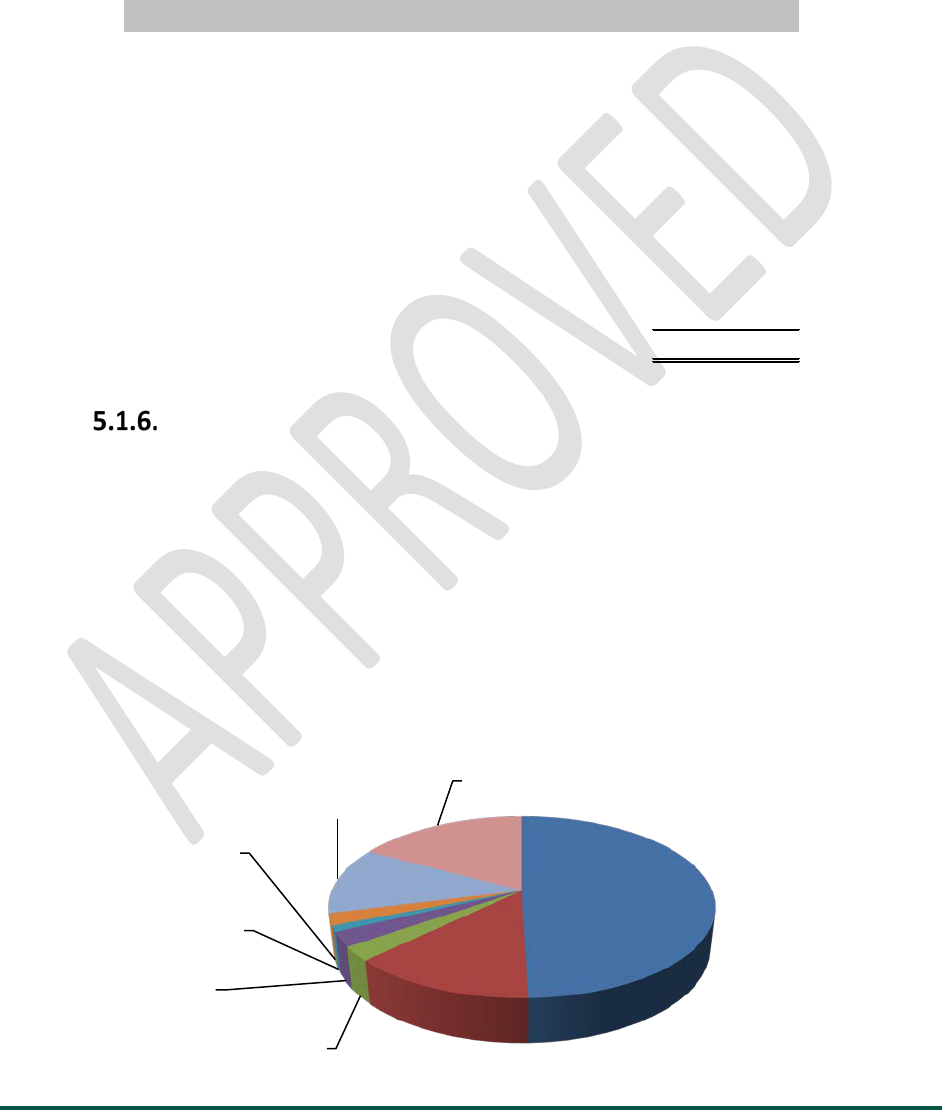
2018/19 Integrated University Plan 38 | Page
Approved by the Board of Governors Motion: 2018BP03.23.04
• Grants from Other Universities is the portion of funding for the Northern Medical Program
that is flowed to the University via the University of British Columbia.
Revenue Change Summary - The following table summarizes all of the above changes to revenue in this
budget framework.
Table 7: 2018/19 Revenue Plan Changes
Expenditure Projections (details of Table 4)
The expenditures of the Consolidated General Operating Fund fall into four main categories:
• Labour, which accounts for 71% of all expenditures
• Operating and Minor Capital Expenditures, which account for 23%
• Instruction and Support, which accounts for 1%
• Transfers, which account for 5% of the total
Adjustments
(000's)
Adjustment re confirmed 2017/18 grant (9)$
Mandate funding 972
Provincial grants - Capital, one-time & other (10)
Research Support Fund adjustment (34)
ICR - Administrative overhead (3)
Grants from other universities (NMP funding from UBC) 75
Interest 40
Tuition & student fee increases 942
ICR - Administrative overhead (3)
Other (7)
Total revenue increase 2018/19 1,963$
Academic
Programs
50%
Academic
Services
13%
Student
Recruitment
2%
Research &
Graduate
Programs
3%
President's
Office /
Executive
Services
1%
External
Relations
2%
Administrative
Services
12%
University
Operations
17%
Figure 9: 2018/19 Consolidated General Operating
Expenditures by Function

2018/19 Integrated University Plan 39 | Page
Approved by the Board of Governors Motion: 2018BP03.23.04
The total Consolidated General Operating Fund expenditures are projected at $81.9 million as
summarized below.
Labour ($57.7 million) has increased by $1.2 million to reflect changes resulting from current collective
agreements, collective bargaining or statutory obligations, as well the adjustments noted in Table 7.
Positions supporting the Indigenization strategy and graduate programs, previously funded through short
term sources, are now included in this total through a reallocation of base operating budget:
• Indigenization strategy
o First Nations Center Counsellor
o First Nations Centre Cultural Coordinator
o Senior Advisor to the President, Aboriginal Relations
• Graduate program support
o Manager, Graduate Programs
Operating Expenditures ($18.7 million) are comprised of all non-salary expenses required to support
programs and services including supplies, utilities, travel and maintenance. The total has increased
slightly ($0.3 million) from 2017/18, after incorporating the increased costs for the student tuition waivers
and making the other adjustments noted in Table 7.
Instruction and Support ($1.0 million) is the amount funded by the 2015/16 funding increase for the
Masters of Engineering program, net of the adjustment noted in Table 7. It has been partially allocated to
labour and operating expenditures, but shown as the gross amount in Table 4 to illustrate that the total
expenses have been maintained in the budget.
Strategic Priorities was an amount allocated in previous years to allow for investment in new initiatives.
The allocation ($0.08 million) was eliminated for 2018/19 due to the ongoing development of the planning
process. Specific new funding was allocated during the planning process if identified as a priority and
sufficient funds are available.
70.5%
22.9%
1.2%
5.4%
Figure 10: 2018/19 Consolidated General Operating Expenditures by
Category
Labour (Salaries, Wages &
Benefits)
Operating & Minor Capital
Expenditures
Instruction & Support for New
Programs
Transfers

2018/19 Integrated University Plan 40 | Page
Approved by the Board of Governors Motion: 2018BP03.23.04
Transfers ($4.5 million) represent the exchange of funds to and from other areas of the comprehensive
financial operation such as transfers to scholarships and bursaries, and transfers from Endowments for
program support. The increase in total net transfers of $0.5 million is due primarily to the fact that fewer
one-time adjustments, other than the amounts noted in Table 7, have been included in the 2018/19 plan.
Expenditure Change Summary – The following table summarizes all of the above changes to expenditures
in this budget framework.
Table 8: 2018/19 Expenditure Plan Changes
Ancillary Operations Budgets
This section outlines the budget framework for three ancillary areas:
• Business Services and Continuing Studies
• English Language Studies
• Parking and Security
An ancillary operation is a unit or department within the University required to be financially self-
sufficient. That is, each operation must generate sufficient revenue to not only cover its annual
operating costs, including utilities and maintenance, but also provide for the renovation and
replacement of its physical assets, including any required debt servicing costs.
Total revenue from all three areas of ancillary operations in 2018/19 is projected to total over $11.4
million. Table 9 below shows the combined proposed budgets for all ancillary areas.
Adjustments (000's)
Labour (salaries, wages & benefits) 1,171$
Operating expenditures 316
Instruction & support for new programs 50
Strategic Priorities allocation (75)
Transfers 510
Total 1,972$

2018/19 Integrated University Plan 41 | Page
Approved by the Board of Governors Motion: 2018BP03.23.04
Table 9 – 2018/19 Consolidated Proposed Ancillary Operations Budgets
Approved
Budget
2017/18
Proposed
Budget
2018/19
($000’s) ($000’s)
Total Revenue
11,399
11,447
Expenditures:
Salaries and Benefits
4,363
4,244
Operating Expenses 7,027 7,003
Transfers 9 200
Total Expenditures & Transfers
11,399 11,447
For information, English Language Studies (ELS) and Parking/Security (PS), report through
International Education and Parking/Security, respectively, while all other units report through the
Director of Business Services and Continuing Studies.
Each section below outlines the proposed budgets for the various ancillary units for 2018/19.
Business Services and Continuing Studies: Overview
UNBC Business Services include the departments, Business Services Central, Residence, Food Services,
Continuing Studies, Conference and Events Services, Retail Services (Bookstore, Print and Copy Services)
and the Charles Jago Northern Sports Centre.
Overall, UNBC Business Services do the following:
• enhance the student experience at UNBC
• provide quality and sustainable ancillary services that support the core academic mission of
UNBC
• offer unique points of contact for future students, alumni, and community members
• generate revenue, which builds capacity overall, with almost half of Business Services revenue
staying within the University.
Business Services have undergone much-needed change in recent years, leading to increased revenue.
Now the focus is on solid business planning and stewardship of resources to support continued and
sustainable growth. Planning within Business Services is directly aligned with the UNBC Stategic Road
Map.
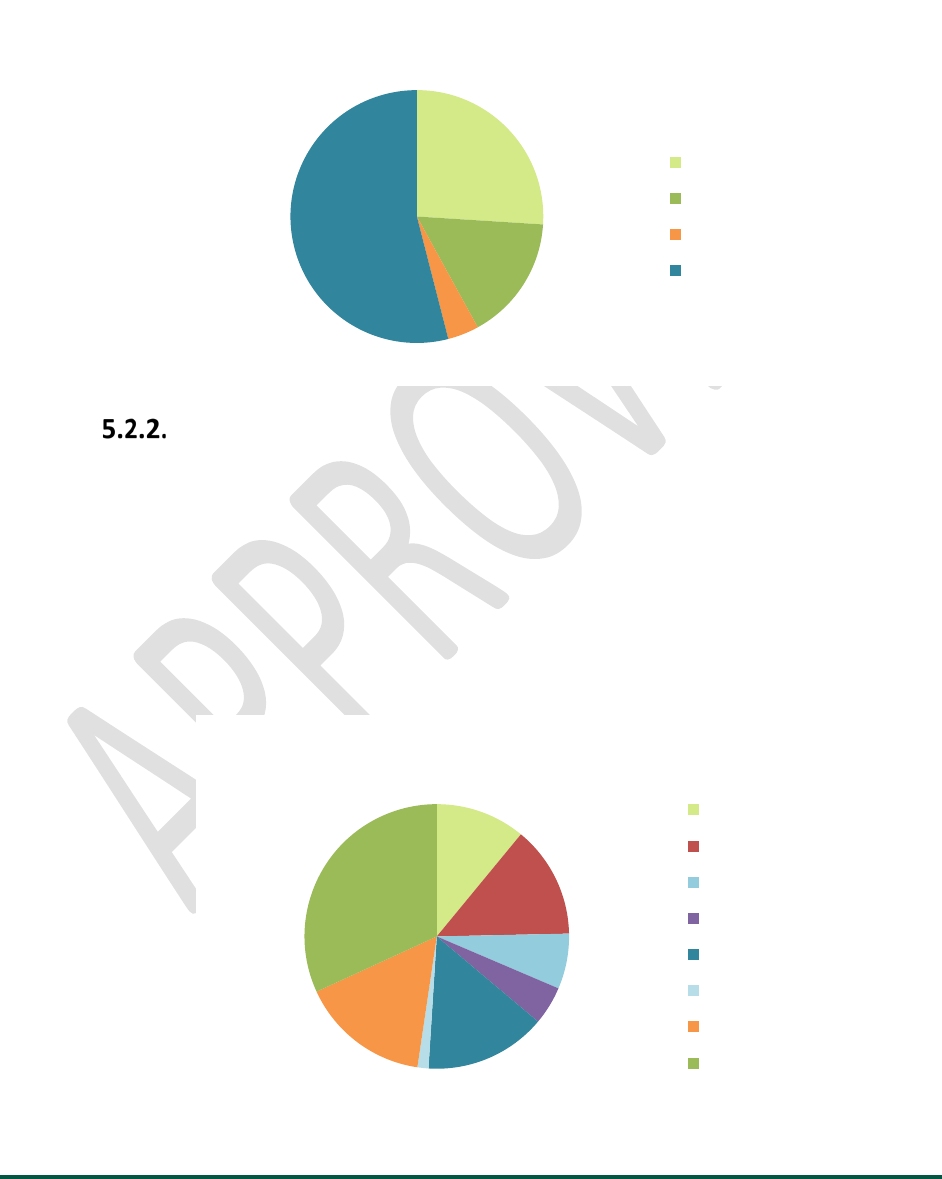
2018/19 Integrated University Plan 42 | Page
Approved by the Board of Governors Motion: 2018BP03.23.04
In 2018/19, UNBC Business Services revenue is projected at $9.5 million, to be allocated as shown in Figure
11.
Figure 11 – 2018/19 Disbursement of Business Services Revenue
Business Services Contribution Summary
UNBC Business Services contributions are a percentage-of-revenue formula, realized as an operating
expense. This model simplifies managing department budgets, and yet maintains contribution levels from
Business Services, which support key areas in the University’s general operating budget.
In 2018/19, UNBC Business Services contribution is projected at $1.5 million, or 16%. The breakdown is
approximated below.
Figure 12 – 2018/19 Allocation of Business Services Contributions
$2.5M
$1.5M
$375K
$5.1M
Business Services Disbursements $9.5M
Labour
Contributions
Transfers
Operating Expenses
$165K
$195K
$105K
$75K
$225
$15K
$240K
$480K
Business Services Contributions $1.5M
Security
Facilities
IT
Human Resources
Student Life
Finance
Marketing
General

2018/19 Integrated University Plan 43 | Page
Approved by the Board of Governors Motion: 2018BP03.23.04
Business Services Central
UNBC Business Services Central (BSC) supports Business Services and Continuing Studies with the overall
leadership, business development, project management, reporting and administration assistance.
Transfers to support this department originate from Business Services units.
Table 10 – 2018/19 Proposed Business Services Central Budget
Approved
Budget
2017/18
Proposed
Budget
2018/19
($000’s) ($000’s)
Total Revenue
-
-
Expenditures:
Salaries and Benefits
390
266
Operating Expenses 152 73
Capital 5 25
Transfers -547 -364
Total Expenditures & Transfers
- -
Residence
UNBC Residence provides on-campus accommodations for students and visitors. There are two
buildings, organized into 129 four-bedroom and 14 two-bedroom apartments, providing 544 total beds
for students and visitors.
Table 11 – 2018/19 Proposed Residence Budget
Approved
Budget
2017/18
Proposed
Budget
2018/19
($000’s) ($000’s)
Total Revenue
2,514
2,603
Expenditures:
Salaries and Benefits
209
132
Operating Expenses 1,314 1,440
Debt servicing 270 270
Capital - 25
Transfers 721 736
Total Expenditures & Transfers
2,514 2,603

2018/19 Integrated University Plan 44 | Page
Approved by the Board of Governors Motion: 2018BP03.23.04
Business Services partners with Student Services to provide essential student support in residences.
The combined focus is to enhance student experience and safety.
Residence completed large-scale renovations in 2017/18. This year the operations team will be
completing a long-term maintenance schedule to plan for additional improvements in the coming years.
Food Services
UNBC Food Services is comprised of student-operated and contracted services located at a variety
of locations on campus. Student-run locations are comprised of the Thirsty Moose Pub and two Degrees
Coffee locations. Business activities conducted in these locations are not reflected in the financial
summary below.
Table 12 – 2018/19 Proposed Food Services Budget
Approved
Budget
2017/18
Proposed
Budget
2018/19
($000’s) ($000’s)
Total Revenue
406
414
Expenditures:
Salaries and Benefits
-
-
Operating Expenses 183 175
Capital - 5
Transfers 223 234
Total Expenditures & Transfers
406 414
Although food services on campus improved tremendously over previous years, Business Services is
committed to continuous improvement and working with Chartwells to ensure that overall service,
including food quality and variety, are high priorities.
Long-term planning is also underway to understand the future needs of campus in terms of food services.
Continuing Studies
UNBC Continuing Studies provides a variety of courses ranging from industry-specific training to credit
programming in partnership with participating programs within UNBC. Programming is delivered in face-
to-face, blended and fully online formats.
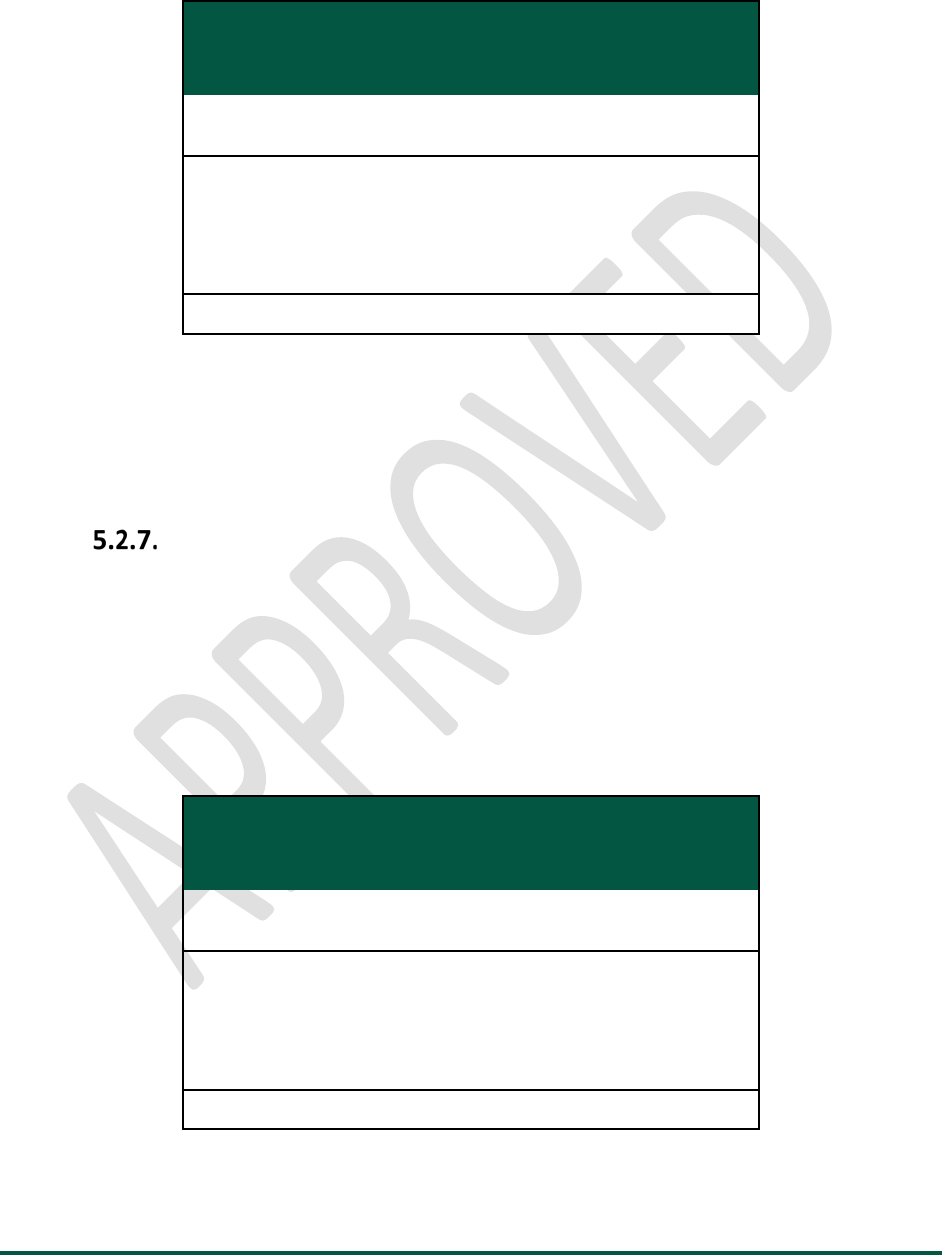
2018/19 Integrated University Plan 45 | Page
Approved by the Board of Governors Motion: 2018BP03.23.04
Table 13 – 2018/19 Proposed Continuing Studies Budget
Approved
Budget
2017/18
Proposed
Budget
2018/19
($000’s) ($000’s)
Total Revenue
1,984
1,861
Expenditures:
Salaries and Benefits
715
705
Operating Expenses 1,267 1,113
Transfers 2 43
Total Expenditures & Transfers
1,984 1,861
Continuing Studies can play a role in supporting UNBC’s academic mission through unique pre-University
bridging programs, post-degree professional development, and course offerings which showcase UNBC’s
expertise in niche areas. Continuing Studies has completed a business development plan, which aligns with
the Academic Action Plan, directing program development for the next five years.
Conference and Event Services
UNBC Conference and Events Services (CES) office supports all of the logistics for hosting an event on
campus. It has the ability to generate significant campus, economic, community, and business benefits
for not only the University, but for Prince George.
Table 14 – 2018/19 Proposed Conference and Event Services Budget
Approved
Budget
2017/18
Proposed
Budget
2018/19
($000’s) ($000’s)
Total Revenue
314
321
Expenditures:
Salaries and Benefits
232
237
Operating Expenses 229 220
Transfers -147 -136
Total Expenditures & Transfers
314 321
80% of CES time serves internal customers, and about 20% is dedicated to external clients but 80 to 90%
of revenue comes from external clients.

2018/19 Integrated University Plan 46 | Page
Approved by the Board of Governors Motion: 2018BP03.23.04
The budget also shows, as revenue, transfers from other Business Services units for manager and
coordinator support. This allows for efficiency within all hospitality-related services in terms of labour
and administration costs, and stabilizes the CES budget so internal services can be maintained.
CES is leading the implementation of a virtual event management system this year. The system will allow
University users to search availability, book rooms and additional services in one system. This project
provides a campus-wide benefit through a one-stop-shop for booking meetings and events easily.
Retail Services
Retail Services consists of Bookstore and Copy Services. Budget summaries for each unit are provided
below.
5.2.8.1. Bookstore
The Bookstore generates revenue through the sale of textbooks, books, and general merchandise.
Declining enrolment and decreased textbook sales put pressure on Bookstore operations. This year the
Bookstore’s strategic business planning aims to mitigate these threats and set renewed direction for
years to come.
Table 15 – 2018/19 Proposed Bookstore Budget
Approved
Budget
2017/18
Proposed
Budget
2018/19
($000’s) ($000’s)
Total Revenue
1,912
1,954
Expenditures:
Salaries and Benefits
367
377
Operating Expenses 1,539 1,576
Transfers 6 1
Total Expenditures & Transfers
1,912 1,954
5.2.8.2. Copy Services
Copy Services consists of the Copy Centre and the multi-functional device fleet for students, faculty,
and the staff. It aims to provide affordable print services for the campus.

2018/19 Integrated University Plan 47 | Page
Approved by the Board of Governors Motion: 2018BP03.23.04
Table 16 – 2018/19 Proposed Copy Services Budget
Approved
Budget
2017/18
Proposed
Budget
2018/19
($000’s)
($000’s)
Total Revenue
461
417
Expenditures:
Salaries and Benefits
-
-
Operating Expenses 438 416
Transfers 23 1
Total Expenditures & Transfers
461 417
Northern Sport Centre
The Northern Sport Center (NSC) is operated by the University on behalf of the two primary
stakeholders, the City of Prince George and UNBC. Each primary stakeholder provides a $300,000
operating grant that is critical to the sustainable operation of the Center. The NSC carries a separate
reserve and financial data is provided for information purposes only.
Table 17 – 2018/19 Proposed Northern Sport Centre Budget
Approved
Budget
2017/18
Proposed
Budget
2018/19
($000’s) ($000’s)
Total Revenue
1,856
1,966
Expenditures:
Salaries and Benefits
799
805
Operating Expenses 1,224 1,258
Capital 50 50
Transfers -217 -147
Total Expenditures & Transfers
1,856 1,966
UNBC’s contribution to the operations of the facility provides access for all students, as well as events in
the facility (e.g., varsity practice/games, exams, convocation). The City of Prince George’s contribution
supports lower user rates for local sport organizations ensuring that fees remain at the lowest
possible level, which is 33% of that for similar facilities in Western Canada.

2018/19 Integrated University Plan 48 | Page
Approved by the Board of Governors Motion: 2018BP03.23.04
The NSC has a generally stable operation that provides consistent contributions to the NSC Reserve.
This has ensured the unit has the essential funds to cover future capital needs.
International Education Budgets
UNBC International Education is a unit comprised of the English Language Studies (ELS), which is cost-
recovery, and International Student Services, which is funded centrally. ELS operation must generate
sufficient revenue to not only cover its annual operating costs, but also contribute 2% of its gross revenue
to UNBC as administrative overhead charge each fiscal year.
Table 18: 2018/19 Proposed English Language Studies Budget
Approved
Budget
2017/18
Proposed
Budget
2018/19
($000’s) ($000’s)
Total Revenue
730
730
Expenditures:
Salaries and Benefits
755
809
Operating Expenses 132 132
Capital 3 3
Transfers -160 -214
Total Expenditures & Transfers
730 730
Parking and Security Services
Parking and Security operates as a combined Ancillary unit. Revenue for the unit is comprised of parking
fees, and security service fees charged to the University and to other Ancillary Units.

2018/19 Integrated University Plan 49 | Page
Approved by the Board of Governors Motion: 2018BP03.23.04
Table 19: 2018/19 Proposed Security and Parking Budget
Approved
Budget
2017/18
Proposed
Budget
2018/19
($000’s) ($000’s)
Total Revenue
1,195
1,155
Expenditures:
Salaries and Benefits
896
914
Operating Expenses 215 217
Transfers 84 24
Total Expenditures & Transfers
1,195 1,155
NOTE: The budget above does not reflect the proposed parking fee increases included in the fee
schedule, due to the timing of the changes received.

2018/19 Integrated University Plan 50 | Page
Approved by the Board of Governors Motion: 2018BP03.23.04
Research

2018/19 Integrated University Plan 51 | Page
Approved by the Board of Governors Motion: 2018BP03.23.04
Sponsored Research
Research is an integral part of UNBC’s mission. The major categories of sponsored research funds are as
follows:
• Competitively adjudicated funding from the Tri-Agencies, of the Natural Sciences and
Engineering Research Council of Canada (NSERC), Canadian Institute of Health Research
(CIHR) and Social Sciences and Humanities Research Council (SSHRC). UNBC’s collective
success in these funding programs provides percentage-based funding to the University in the
form of the Research Support Fund.
• Canada Research Chairs program, of which UNBC currently has six, including five Tier Two and
one Tier One chair.
• Competitively awarded major research infrastructure support from the Canada Foundation
for Innovation (CFI), the B.C. Knowledge Development Fund (BCKDF).
• Other sources including research agreements with governments, foundations and industry as
shown in the table below.
Table 20 below, illustrates the total research revenue by category over the past five years:
13/14 14/15 15/16 16/17 17/18*
Source
Total
Awards
Total
Awards
Total
Awards
Total
Awards
Total
Awards
000's 000's 000's 000's 000's
NSERC
1,177,481
1,135,011
1,005,563
802,961
803,326
SSHRC
491,267
541,488
392,865
313,136
285,143
CIHR
453,127
514,848
604,966
525,785
723,287
CRC
1,100,000
975,000
725,000
600,000
575,000
Research Support Fund
1,365,666
1,239,661
1,145,436
1,075,252
1,040,648
Other
7,179,314
6,611,639
3,408,109
5,613,566
4,704,265
BCKDF
81,257
315,354
170,970
403,261
0
CFI
382,508
32,986
70,061
403,264
52,362
Endowment Allocations
to Research
637,862 641,288 1,030,703 1,061,545 1,158,758
Total Research Funds
12,868,482
12,007,275
8,553,673
10,798,770
9,342,789
*17/18 amounts based on a fiscal year that is not yet complete
Internal Funding Programs
The Office of Research and Graduate Programs has various funding programs to support research and
students by way of fostering a strong research community at UNBC. Continual evaluation of, and
improvements made to, our internal funding programs ensure we can be proactive and make investments
to leverage the breadth and diversity of activities by our researchers and students. For instance, the new

2018/19 Integrated University Plan 52 | Page
Approved by the Board of Governors Motion: 2018BP03.23.04
Research Strategic Investment Grant (RSIG) allows researches to apply for rapid funding in support of their
research area. Internal funding programs currently offered are:
• Office of Research Seed Grant
• Office of Research Travel Grant
• Office of Research Publication Grant
• Research Strategic Investment Grant (RSIG)
• Undergraduate Research Experience (URE)
• Office of Research Bridge Grant
• Graduate Entrance Research Award
• Graduate Student Research Project Award
• Graduate Student Tri-Council Scholarship Operating award
These internal funding programs have been an integral component of support for the UNBC Research
community. Over $430,000 was invested in research from the internal grant programs listed above.
External Grant Funding
External funding is vital to the success of UNBC. In recent years, the University has relied primarily on Tri-
Council and established funding partners. Over the past year, UNBC has continued to diversify funding
partners, specifically in areas of applied and industry-linked research. UNBC continues to see strong
results in contract-related research, which is reflected as “other” in the research funding table. Due to on-
going activities and large scale consortium grants, continued growth is expected in all external funding
areas in 2018/19.
Institutional Partnership Funding
Recently, UNBC was part of British Columbia Innovation Supercluster awarded to industry partners in
digital technology and the research universities of British Columbia (University of British Columbia, Simon
Fraser University and University of Victoria) with funding of $750 Million. UNBC also continues to be
engaged in partnership with the B.C. Strategy for Patient Oriented Research (SPOR) support unit and
Academic Health Sciences Network (AHSN) for the Canadian Institutes of Health Research SPOR Grant.
UNBC is the lead research university for this $21 million, five-year grant, with AHSN receiving $4.3 million
annually on behalf of UNBC. This will position UNBC for increases in its Canada Research Chair allocation
numbers and increase in its Research Support Fund until 2023.
Research and Advancement Linkages
A continued priority is to create a stronger link between the research and advancement portfolios to
support philanthropy-linked research activities at UNBC. Over $106,000 in contributions are included in
Office of Research totals, and are also reported in the Office of Advancement Board Report for Fiscal 2018.
These contributions were received from:
• Biodiversity Project - $20,000

2018/19 Integrated University Plan 53 | Page
Approved by the Board of Governors Motion: 2018BP03.23.04
• Northern Agriculture - $30,000
• Tula Foundation - $56,041
Research Chairs and Institutes
Integral to UNBC’s research community are the six Canada Research Chairs (CRC) and eight Endowed
Research Chairs. Last year, UNBC added the new Canada Research Chair in Hybrid Wood Structures
Engineering for Dr. Thomas Tannert. His appointment marks UNBC’s first double research chair and
maintains the total complement of 14 Research Chairs.
In 2017/18, UNBC will include two additional CRC’s, recently submitted in the area of social determinants
of health and current recruitment for a CRC in the area of Cumulative Impacts. The development of UNBC’s
first NSERC Industrial Research Chairs is progressing and has an identified Industry Partner. This will bring
the total complement to 17 research chairs. The three main research institutes of Community
Development Institute (CDI), Natural Resources Environmental Studies Institute (NRESi) and Health
Research Institute (HRI) continue their outstanding work of supporting research, providing mentorship
and enhancing the UNBC research community. The work of the Tri-institute Cumulative Impacts Research
Consortium (CIRC) and Northern Fire continue to expand their work. Although not an institute, UNBC also
has the Research Data Centre on campus that will support all research that utilizes data.
Wood Innovation Research Lab (WIRL)
Last year UNBC’s application to the Federal Program Strategic Investment Fund (SIF) for the Wood
Innovation Research Lab was successful. As the lab moves towards completion in April of 2018, the
University just received notice that supports research in the Lab and has been awarded funding from both
the Canadian Foundation for Innovation and BC Knowledge and Development Fund totalling $1.6 million.
Continued Areas of Focus
It is vital to the success of the research mission that the University continues to be proactive and adaptable
in meeting the demands of the changing research environment from the provincial, national and
international perspectives. Below are initiatives to be taken.
• Increase funding for undergraduate and graduate students to support opportunities to
engage in research.
• Revamp the Indirect Costs of Research Program meeting the regulations of the federal
Research Support Fund.
• Align Strategic International Research Partnerships with UNBC’s research mission.
• Support the Research Exchange of the BC Interior University Partnership (UNBC, Thompson
Rivers University, UBC Okanagan).
• Develop an Innovation Strategy with provincial and federal partners.
• Continue diversification of research funding partners.

2018/19 Integrated University Plan 54 | Page
Approved by the Board of Governors Motion: 2018BP03.23.04
Research Summary
Overall, through sponsored research, institutional research partnerships and research linked to
philanthropy, UNBC has been able to acquire and invest more than $9.0 million towards research activities
in 2017/18. The University’s focus on supporting research activities at UNBC will continue throughout the
coming. This focus is directed by the endorsed 2017-2021 Strategic Research Plan, under the portfolio of
the Vice-President Research and Graduate Programs. It is also part of the Integrated University Plan
supporting the overarching strategic goals of the University.
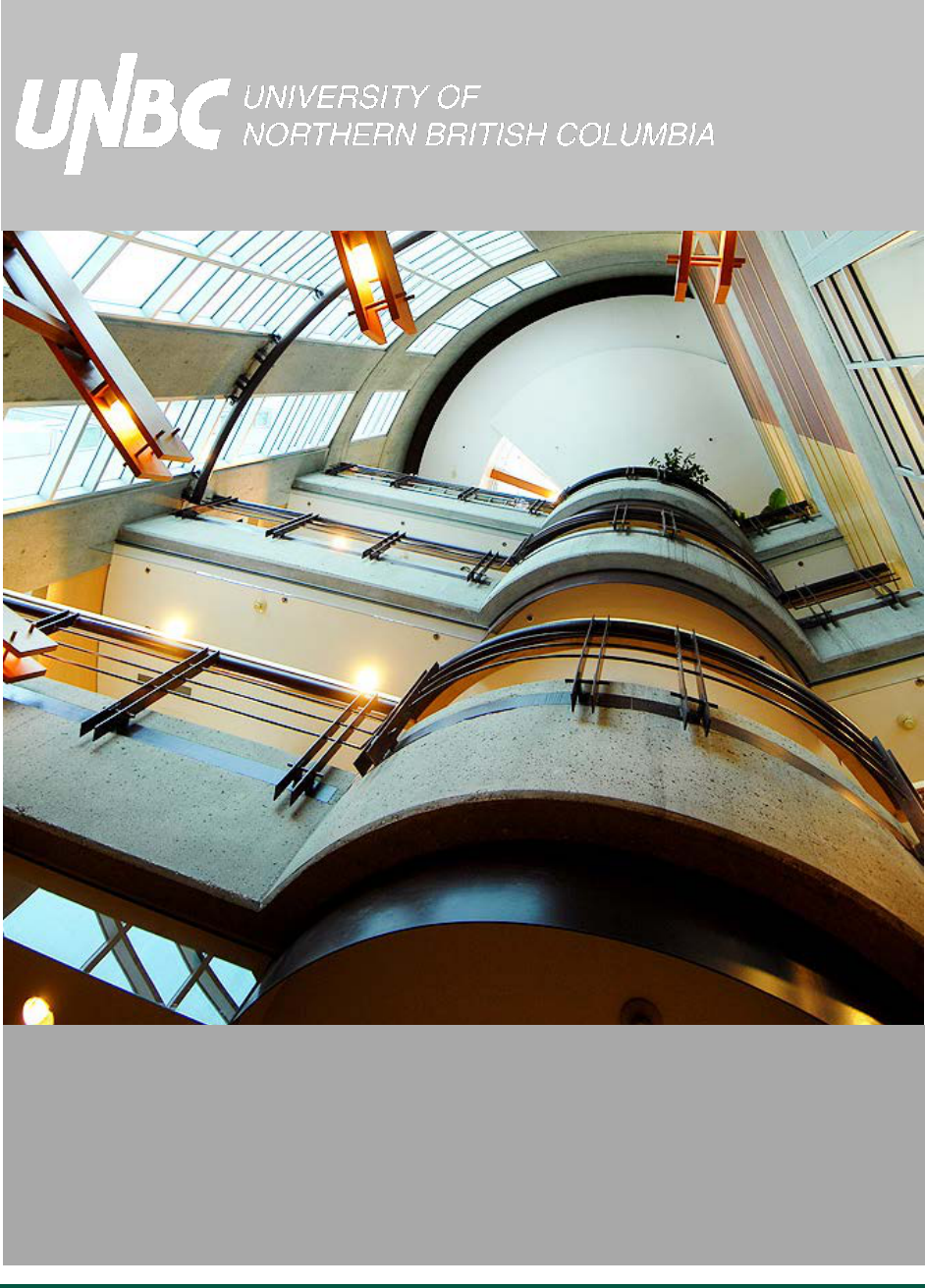
2018/19 Integrated University Plan 55 | Page
Approved by the Board of Governors Motion: 2018BP03.23.04
Specific Purpose and Endowment
Funds

2018/19 Integrated University Plan 56 | Page
Approved by the Board of Governors Motion: 2018BP03.23.04
Specific Purpose and Endowment Funds
The specific purpose fund and endowment funds comprise two separate series of funds:
• Specific Purpose funds are externally restricted (e.g. Aboriginal Service Plan) or internally
restricted (e.g. student awards, library fines and reserves). They are also expendable funds,
externally restricted (e.g. various student awards) and mostly supported by donations to the
University. External donations and internal transfers to expendable funds can be used to
directly support project-related expenses. Most specific purpose fund revenue is one-time
and non-recurring.
• Endowment funds are externally restricted and supported by donations to the University and
interest earned on those donations (e.g. student scholarships, library endowments, and
endowed chairs). Donations to endowment funds cannot be spent directly: they are intended
to generate interest (investment) income, which in turn is used to support project-related
expenses in perpetuity. Revenues in these funds are cyclical by nature and therefore
fluctuate, sometimes significantly, from year to year.
The majority of revenue in the specific purpose fund and endowment fund is usually from investment
income and donations. In 2016/17 these two revenue categories respectively made up 32% and 46% of
total revenue. Most of the donations revenue came through the specific purpose funds, while all of the
investment income came through endowment funds.
Given the unpredictable nature of revenue within funds, it can vary considerably from year to year. For
example, total revenue in the specific purpose and endowment funds was $7.1 million in 2013/14, $10.7
million in 2014/15, $10.1 million in 2015/16 and $10.1 million in 2016/17.
It is estimated that as of March 31, 2018, there will be 306 funds with an estimated market value of $75.4
million. This is the result of more than 25 years of philanthropy and investment.
All specific purpose and endowment funds are “restricted”. They can only be used for the purposes stated
in the donor funding agreements or by internal decisions. They cannot be allocated to support any other
activity, such as offsetting deficits or addressing budgetary pressures within the general operating budget.
Spending in the specific purpose funds is limited to available fund balances in any given year and may be
governed by donor agreements or internal restrictions.
The Investment Committee, a sub-committee of the Board of Governors’ Finance and Audit Committee,
sets the University’s endowment objectives, policies, spending policy, and other related parameters. This
is to empower investment managers to generate investment income sufficient to support specific areas
of the University’s activities as set out in the terms and conditions of the various donor agreements.
Spending from the Northern Medical Programs Trust (NMPT) is determined by the NMPT Society that is
composed of representatives from the participating communities.
Various budget holders, as shown in the chart below, are annually allocated a portion of the income
generated through the endowment funds. For 2017/18, the total income available for distribution from
endowment funds was $2.5 million (2016/17 - $2.5 million; 2015/16 - $2.3 million) and allocated as
indicated in Figure 13 below.
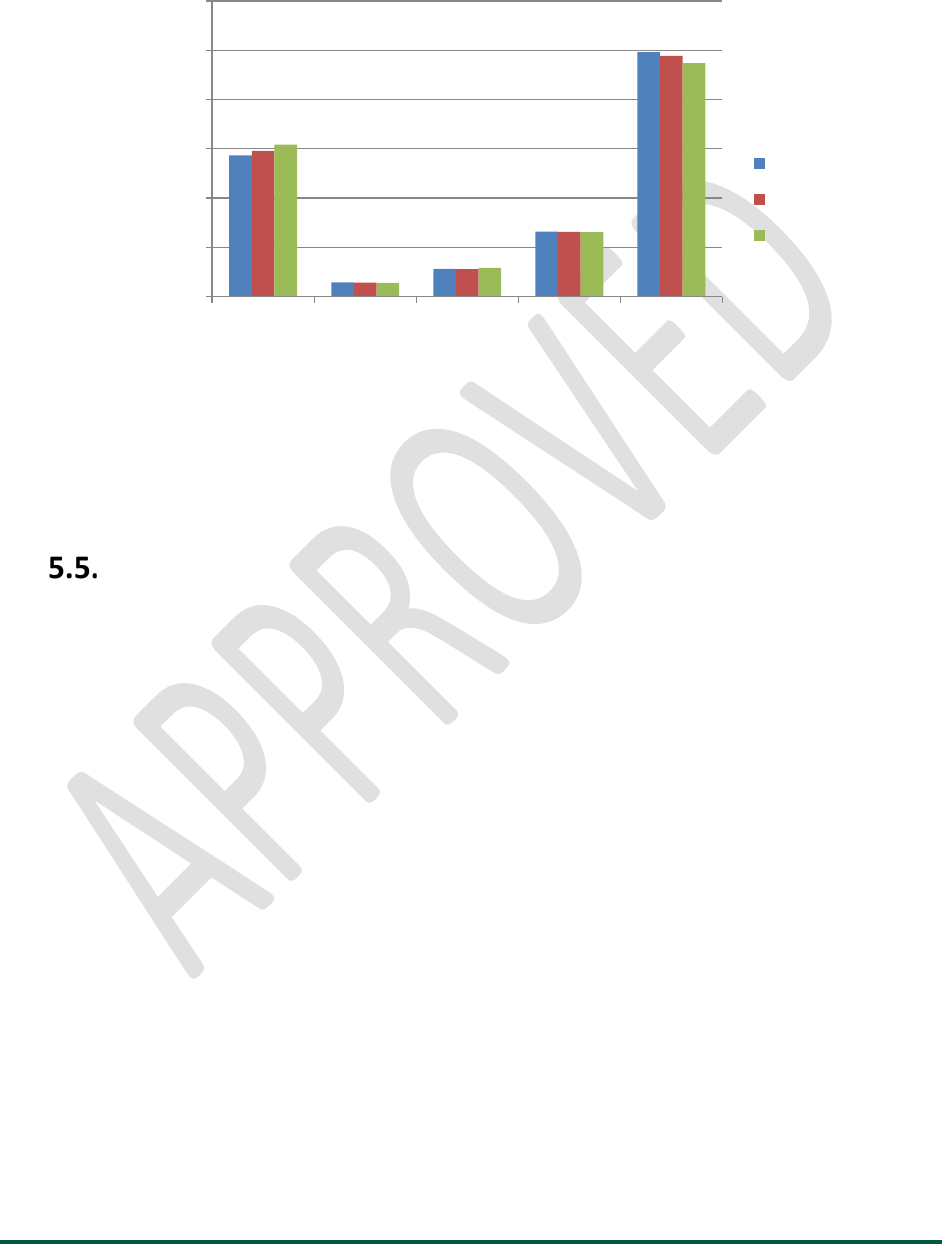
2018/19 Integrated University Plan 57 | Page
Approved by the Board of Governors Motion: 2018BP03.23.04
Figure 13: 2015/16 to 2017/18 Endowment Budget
To ensure sustainability, the spending rate for the endowment funds is currently set at 3.5% of the three-
year rolling average of the market value of the endowment portfolio. The Investment Committee reviews
the spending rate annually.
Conclusion
The budgets and financial information in the preceding pages present a comprehensive financial picture
of UNBC. The Consolidated General Operating budget and Ancillary budget are balanced and play an
important role in the overall financial results of the University. The Ancillary units continue to
demonstrate sound financial operations and provide a significant contribution to UNBC.
Presenting the financial data related to research and specific purpose areas, is intended to demonstrate
the significant contributions these activities make to the mission of UNBC.
0%
10%
20%
30%
40%
50%
60%
Student
Awards
Library Program
support
Northern
Medical
Programs
Trust
Research
2015/16
2016/17
2017/18

2018/19 Integrated University Plan 58 | Page
Approved by the Board of Governors Motion: 2018BP03.23.04
Appendix 1: 2018/2019 Action Planning Template
The Action Planning Template prepared by each Unit includes the following key sections:
Tab 1 – Action Plan Goals and Measures
Please complete the information below for your unit/program or department/college submission
Department/College Name
Unit/Program Name
Date of Submission
Unit Lead
Budget Org Code(s)
2017/2018 UPDATE
2017/18 Goal
(List in order of last year's
priorities).
2017/18 Key Success Measures
(Based on the KSMs indicated in your goals for last year,
please identify whether your unit is on track to achieve or not
on track to achieve your goals. Click in the cell to select from
the drop down list.)
2018/2019 GOALS
2018/19 Goals
List in order of priority (1 =
highest priority; 3 = lowest
priority).
Alignment with University Strategic
Priorities
(
Click in the cell to select from the drop
down list).
New 2018/19 Goals (April 1, 2018 to March 31, 2019)
(Provide a concise description of up to three goals your unit can achieve within your existing resources (budget, people, infrasturcture). Goals should describe the anticipated result or desired outcome.)
Alignment
(If the outcome addresses a specifc Action
Planning document (Academic Action Plan,
Research Action Plan, etc.), please identify
the original document reference number,
otherwise leave blank).
Challenges
(Please explain what challenges are preventing you from achieving your
2017/18 Goals.)
2017/18 Outcomes (April 1, 2017 to March 31, 2018)
(Provide a brief narrative describing the anticipated outcome of your unit's goals for 2017/18.)
University Action Plan - Summary

2018/19 Integrated University Plan 59 | Page
Approved by the Board of Governors Motion: 2018BP03.23.04
Tab 2 – Action Plan Details Based on Current Resources
2018/19 Unit Action Plan Details Based on Current Resources
Start End
Goal 1
Goal 2
Goal 3
Unit Goal
(Use the same
priority # as
above.)
Impact of Unit Goals and Action Plans on Current Operations and Service Levels
(Explain how the new goals and actions will affect your current operations/services or other units' operations/services.)
ACTIONS
Unit Goal
Priority #
Lead
(Identify who is
responsible for
leading each
initiative.)
Other Department
Resources Required
(Identify other University
resources that may be
required to achieve the
outcomes e.g. ITS, Finance,
Registrar, Program.)
Estimated Timeline
(Month/Year)
Key Success Measures (KSM)
(The KSMs will help you gauge the
progress your unit is making towards
achieving final outcomes.)
Description of Action Plan
(
Provide a concise description of up to three initiatives per goal. The
initiatives should be concrete, measurable and attainable and will help lead
your unit to the successful completion of each goal.)
Current KSM Baseline
(What is the current baseline for your
measure?)

2018/19 Integrated University Plan 60 | Page
Approved by the Board of Governors Motion: 2018BP03.23.04
Tab 3 – Proposed Reallocation of General Operating Funds
Org Code
Amount
(Identify the amount
available for
reallocation).
$ -
$ -
$ -
$ -
$ -
$ -
$ -
Total Proposed General Operating Fund Reallocation
(This total will be automatically calculated based on the above entries.)
2018/19 University Action Plan - Financial Worksheet - Proposed Reallocation of General Operating Funds
Impact of Proposed Reallocation on Current Operations and Service Levels
(Explain both the benefits and the risks associated with the proposed reallocation on current operations or service levels either in your unit or
in other units).
(Please identify funding from your unit's current ongoing base operating budget that can be reallocated to support and advance the University's strategic priorities.)
Section 1A: Proposed Plan for General Operating Fund Reallocation
Description
(Clearly describe each proposed reallocation in the section below)
Expenses (e.g. telephone, meetings, travel, labour)

2018/19 Integrated University Plan 61 | Page
Approved by the Board of Governors Motion: 2018BP03.23.04
Tab 4 – Proposed Reallocation of One-Time Funding Sources
Fund Org Code
Amount
(Indicate the amount
available for
reallocation.)
$ -
$ -
$ -
$ -
$ -
$ -
Fund Org Code
Approximate
Amount
(Identify the amount
required to carry out
your plan.)
University Strategic Priority
Alignment
(
Click in the cell to select from
the drop down list.)
$ -
$ -
$ -
$ -
$ -
$ -
2018/19 University Action Plan - Financial Worksheet - Proposed Reallocation of One-Time Funding
Type of One-Time Fund
(Click in the cell to select the type of fund from the drop down list.)
(Please identify funding from your unit's current carry forward, one-time funding, specific purpose fund, etc., that can be reallocated to support and advance the University's strategic priorities. These are funds that are outside your General Operating Budget.)
Section 1B: Proposed Plan for One-Time Reallocation
Total Amount Required from Remaining One-Time Funds
(This total will be automatically calculated based on the above entries.)
Impact of Proposed Reallocation on Current Operations and Service Levels
(Explain both the benefits and the risks associated with the proposed reallocation on current operations or service levels either in your unit or in other units.)
Type of Fund
(Click in the cell to select the type of fund from the drop down list.)
Proposed Plans for Current One-Time Fund Balances
(Describe the proposed plans for remaining one-time fund balances.)
Total Proposed One-Time Fund Reallocation
(This total will be automatically calculated based on the above entries.)
Section 1C: Proposed Plans for Current One-Time Funds
(Complete this section for balances remaining in one-time funds.)

2018/19 Integrated University Plan 62 | Page
Approved by the Board of Governors Motion: 2018BP03.23.04
Tab 5 – Proposed Investment Opportunity
Section 2: University Action Plan - Financial Worksheet - Proposed Investment Opportunity
Proposed
Start
Proposed
End
Org Code
Amount
(Identify the estimated
amount.)
Type of Investment
Opportunity
(Click in the cell to select the
type of funding being
requested from the drop
down list.)
$ -
$ -
$ -
$ -
$ -
$ -
$ -
Total Proposed Investment
(This total will automatically calculate based on the above entries)
Operating Expenses
Description
(Clearly describe each proposed expense that is new and is in excess of your current resources.)
Rationale
(Provide an explanation of the positive effect of the investment on current operations or service levels.)
Proposed Plan - Investment Opportunity
Alignment with
University Strategic
Priorities
(
Click in the cell to select
from the drop down list).
Lead
(Identify who will be
responsible for leading this
initiative.)
Estimated Timeline
(Month/Year)
Key Success Measures
(KSM)
(The KSMs will help you
gauge the progress your unit
is making towards achieving
final outcomes.)
Description of Proposed Plan
(Provide a brief description of your unit's proposed investment opportunity).
Personnel
(For potential investment opportunities outside of your current resources (budget, people, infrastructure), please provide a description of proposed plans, identify how the initiative(s) will help to support and advance the University's strategic priorities, and summarize the estimated costs.)
Other Department Resources Required
(Identify
other University resources that may be required to help
your unit achieve the outcome e.g. ITS, Finance, Registrar,
Program.)

2018/19 Integrated University Plan 63 | Page
Approved by the Board of Governors Motion: 2018BP03.23.04
Appendix 2: 2018/2019 Goals
The next planning cycle will continue to build on the goals and actions of the various units in more detail.
This will help to inform the University community on the strategic priorities of each unit and provide
measures of success. The following is a summary of the type of information gathered during this planning
cycle:
